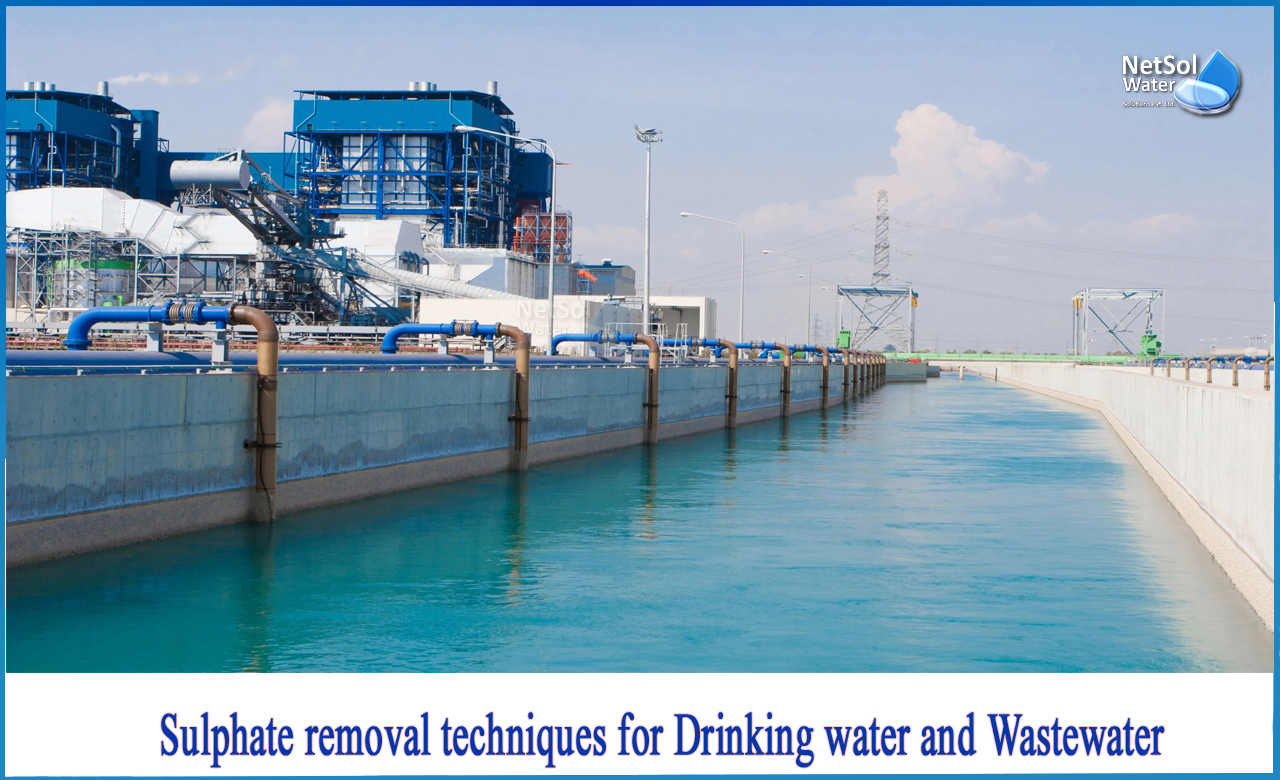How to remove Sulphate from Drinking water and Wastewater?
Almost all-natural water contains sulphate (SO4). The oxidation of sulphite ores, the presence of shales, or industrial wastes are the sources of most sulphate compounds. The “World Health Organization (WHO)” recommends a maximum sulphate level of 500 mg/l in the Guidelines for Drinking-Water Quality, which were established in Geneva in 1993.
Effects of sulphate on Humans and Environment
Humans that consume water with excessive sulphate levels face health hazards. Dehydration and diarrhoea can occur in people who are not used to drinking water with high sulphate levels of more than (>1,000 mg/L). Sulphate sensitivity is generally higher in children than in adults. Water with a sulphate level greater than 400 mg/l should not be used in the making of infant food as a precaution. Although sulphates in drinking water are not normally harmful to humans, moderate quantities (250–500 mg/L) are associated with an unpleasant taste.
Elevated sulphate levels have been linked to detrimental environmental impacts in recent years. They can damage aquatic plants while also supporting algal blooms and producing major environmental changes.
Sources of Sulphate in Industrial Wastewater
Sulphates are utilized, manufactured, or a source of concern in a variety of operations, including mining, oil and gas, and the production of fertilisers, dyes, paper, soaps, cosmetics, insecticides, and other products. These are collected in flue-gas desulfurization (FGD) systems in fossil-fuel power plants. Metals are frequently recovered from sulphur-containing minerals in mining, and processing, leading, in oxidation to sulphates.
Sulphate Removal Treatment Techniques
To bring total sulphate levels into regulatory compliance, a range of treatment techniques are available. Choosing the best solution or mix of solutions can be difficult, but specialists can assist you in evaluating and navigating your alternatives.
Seasonality, incoming sulphate concentrations, discharge targets, and residuals management choices are just a few things to consider. We imply consideration of where the sulphates will end up as a solid to be landfilled or as a liquid brine to be added to an existing tailings or evaporation pond by residuals management. We'll go over a few of these possibilities in details below.
1: Reverse Osmosis: ROis a water treatment technique that removes most dissolved elements and compounds, such as sulphate, from water by forcing it through a "semipermeable membrane". It can often remove between 93 and 99 percent of sulphate from drinking water and even from industrial wastewaters following pretreatment.
2: Electrocoagulation: Sulphate ions can be removed by electrocoagulation, resulting in solid waste. It necessitates careful tuning in response to operational circumstances and can be costly in terms of electricity and consumables.
3: Chemical precipitation: It can be a great way to remove one or a few particular ions selectively. It leaves behind a low-volume, solid 'filter cake' residue that can be disposed of in a landfill. Almost all of the water that is treated can be released, leaving no brine liquid waste. Specific ions are precipitated out in physical-chemical processes by adding an appropriate reagent. In the case of sulphates, barium chloride can be used to make barium sulphate. Although barium chloride is not inexpensive, if the need is just seasonal, this strategy could save money on capital and eliminate the need for brine management.
4: Ion-Exchange: An anionic resin is used in ion exchange technologies to remove sulphates. Ion exchange does not require pretreatment, has low energy consumption and other expenditures, and produces innocuous residues that take little effort to dispose of, such as gypsum. Butthese may require regular regeneration and are susceptible to fouling by particulates and organics. Because of the enormous volumes of dissolved organics, fouling is a particular problem when the feed water comes from lakes or rivers. Furthermore, in the absence of supporting equipment such as ultrafiltration, resins can accumulate organics, allowing bacteria to thrive.
What can we do to assist you?
Sulphate treatment does not imply that all water is treated and all sulphates are removed. Your plant can be set up to treat a side stream before blending to meet your aim. Regardless of the sulphate treatment method chosen, this can reduce both capital and operating expenditures.
We do this type of job on a daily basis, so there's no need for you to become an expert. To receive help assessing, mapping, and costing your choices, contact Netsol Water. We can get started right away if you have comprehensive water chemistry, plant capacity, and treatment goals.
We can add our testing, automation, and piloting skills to the project once a treatment technology has been selected. Please contact us on+919650608473 or contact via email at enquiry@netsolwater.com for further consultation or product purchase related query.



